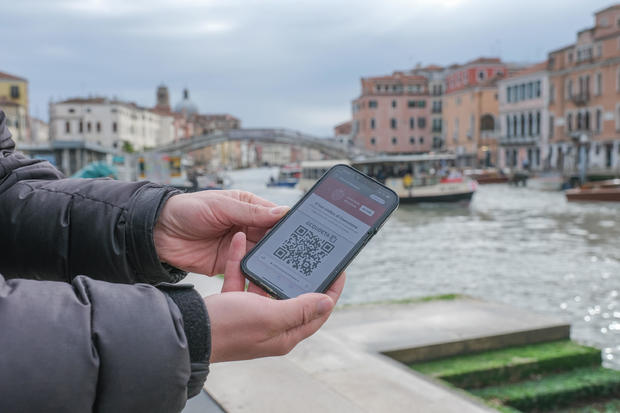On Thursday, Venice, Italy became the first city in the world to charge day tourists a fee just to visit its historic canals and other attractions on peak days.
The measure is designed to counter over-tourism and mitigate the deleterious impact large crowds can have on some of the city’s fragile sites, while also persuading some tourists to visit during less busy times of the year.
The roughly $5.37 fee only applies on 29 days that are deemed to be the busiest between April 25, a holiday in Italy, and July 14, in a trial phase of the reservation-and-fee system.
Getty Images
Most people entering the city must register and obtain a QR code, or a ticket for visitors without smartphones, but some tourists are exempt from paying the fee. For instance, visitors who spend the night in a hotel or Airbnb-style accommodation are not subject to the nominal tourist fee. Likewise, residents, people born in Venice, people visiting relatives who are residents, workers, students and visitors under the age of 14 do not have to pay either.
There is no cap on the number of tourists who may reserve a visit on a given day.
In a public video, Luigi Brugnaro, the mayor of Venice, called the new system an “experiment” to protect the city.
“We do it with great humility,” he said. In a social media post, he added that the rollout was “going well” and “the atmosphere is relaxed.”
Simone Venturini, the tourism councilor of Venice, added, “The whole world would like to visit Venice, and this is an honor for us. But not everyone in the world is able to do so on the exact same day.”
However, some residents protested the new policy on Thursday, according to media reports. Some were seen clashing with riot police, while others tried to break through a blockade, CNBC reported.
The fragile lagoon city has a population of roughly 50,000, a sliver of what it was a couple of generations ago. On its busiest days, it can draw nearly as many tourists as it has residents.
A United Nations Educational, Scientific and Cultural Organization (UNESCO) World Heritage property, the city features masterpieces from Giorgione, Titian, Tintoretto and others.


